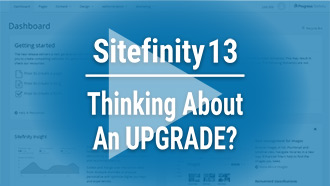Web Smarts - Business Savvy
We’ve been building websites since 1998
We are trusted advisors to Over 50 Active Clients within several industries including associations and nonprofits, healthcare, financial services, retail, B2B and more.

We Are
Trusted
Partners
After we deliver a quality website on time and within your budget, we will be there for when it really counts. We will be proactive, consultative and strategic after we launch your website.

We Are
Integration
Experts
We’ve integrated with virtually every AMS system on the market as well as most LMS, publication, advocacy and career center applications. Our company was founded on custom development.

We build websites that are easy to edit, manage and design using the best content management system on the market, Sitefinity CMS.
We Provide A Full Spectrum Of Services
Our Clients Are Our Partners....
John Wurm

The team at Vanguard helped us think about our digital presence from the perspective and needs of our users, while holding true to the values our organization espouses.
Connect With Us
Improve Your Webcopy

The
Vanguard View
Technology articles about one topic from the perspective of Leadership, Marketing and IT professionals .
Personal Experiences Drive Engagement, Revenue
People Reward Websites that Offer Personalized Experiences
Website personalization has been the "holy grail" of online engagement for years, even decades, because of the benefits derived from creating unique user experiences. And now, it's cost-effective and relatively easy for organizations of all sizes to incorporate multi-level personalization to their websites.
Many large brands — Amazon, Netflix, and Facebook among them — use sophisticated personalization to enhance their user experiences. And the reason is quite simple: personalization leads to greater user engagement, extended time on site and, ultimately, higher revenue.
The correlation between personalization and revenue has been borne out by study after study over the years. For example, an Epsilon survey of 1,000 consumers between 18 and 64 years old found 80% of people surveyed said they are more likely to do business with a company that offers personalized experiences; 90% of respondents found personalization appealing.
Website personalization is basically a two-step process: segmentation and implementation.
Identify Groups Within Your Target Audience
Segmentation is a data-driven process. Marketing should probably take the lead, but you might want to get input from other areas, such as sales, membership and IT as well.
Your organization's goals and objectives will help you determine how to divide your audience into groups. For example, if you're looking to increase sales you might want to group people by the frequency and size of their purchase activity. Similarly, if you're looking to build lifetime value, you might want to consider factors such as age or career stage.
These high-level criteria can then be blended with internal data pulled from your customer relationship management or association management systems. This will not only shed light on how specific groups have interacted with your website in the past, but also enable you to identify opportunities for deepening engagement.
At Vanguard, we find it very helpful to create personas for each of your audience segments. Personas are fictional characters that embody the characteristics and lifestyle of a targeted audience segment. Defining who these personas are allows you to test if proposed website content would be appropriate for that audience.
Putting Personalization into Practice
Once you have your audience segments identified, you'll need to come up with a strategy for creating content for each group. The strategy should incorporate the needs and interests that are unique to each segment. For example, an association would want to have content specifically for those members starting their careers and other items aimed at industry veterans.
Depending on how detailed and specific you want to get, you can apply the personalization approach across all types of content. Articles, calls to actions, and promotional messaging can all be tailored to specific groups.
Technology is the other side of the implementation coin. First and foremost, you're going to have to be able to identify individual users coming to the site and place them in the appropriate audience segment. If you want to take some of the guess work out of this process, you can ask people to create online profiles and indicate their preferences for the topics and types of content that most interest them.
You're going to want to track people's activity when they're on your site so you can serve up related content during their next visit. This will require you to tag content appropriately so the content management system can accurately pull items earmarked for a specific segment.
The Road to Better Engagement
It's important to continue to collect and analyze data of how people are interacting. This will enable you to check and refine your original assumptions for each audience segment, as well as identify new opportunities for connecting with people.
The goal of website personalization has been around for years, but it's never been more important as people increasingly are turning to the Internet for information and connection. A personalization strategy not only allows you to stand out from the crowd, but also lets you create a better user experience. That deeper user engagements is the key to unlocking new revenue opportunities.
Vanguard Tips & Tricks
We provide helpful hints you never knew you needed for our clients. Check out "Vanguard Tips & Tricks" to learn quick and simple hacks to make managing your website easier than ever.
Personal Experiences Drive Engagement, Revenue
People Reward Websites that Offer Personalized Experiences
Website personalization has been the "holy grail" of online engagement for years, even decades, because of the benefits derived from creating unique user experiences. And now, it's cost-effective and relatively easy for organizations of all sizes to incorporate multi-level personalization to their websites.
Many large brands — Amazon, Netflix, and Facebook among them — use sophisticated personalization to enhance their user experiences. And the reason is quite simple: personalization leads to greater user engagement, extended time on site and, ultimately, higher revenue.
The correlation between personalization and revenue has been borne out by study after study over the years. For example, an Epsilon survey of 1,000 consumers between 18 and 64 years old found 80% of people surveyed said they are more likely to do business with a company that offers personalized experiences; 90% of respondents found personalization appealing.
Website personalization is basically a two-step process: segmentation and implementation.
Identify Groups Within Your Target Audience
Segmentation is a data-driven process. Marketing should probably take the lead, but you might want to get input from other areas, such as sales, membership and IT as well.
Your organization's goals and objectives will help you determine how to divide your audience into groups. For example, if you're looking to increase sales you might want to group people by the frequency and size of their purchase activity. Similarly, if you're looking to build lifetime value, you might want to consider factors such as age or career stage.
These high-level criteria can then be blended with internal data pulled from your customer relationship management or association management systems. This will not only shed light on how specific groups have interacted with your website in the past, but also enable you to identify opportunities for deepening engagement.
At Vanguard, we find it very helpful to create personas for each of your audience segments. Personas are fictional characters that embody the characteristics and lifestyle of a targeted audience segment. Defining who these personas are allows you to test if proposed website content would be appropriate for that audience.
Putting Personalization into Practice
Once you have your audience segments identified, you'll need to come up with a strategy for creating content for each group. The strategy should incorporate the needs and interests that are unique to each segment. For example, an association would want to have content specifically for those members starting their careers and other items aimed at industry veterans.
Depending on how detailed and specific you want to get, you can apply the personalization approach across all types of content. Articles, calls to actions, and promotional messaging can all be tailored to specific groups.
Technology is the other side of the implementation coin. First and foremost, you're going to have to be able to identify individual users coming to the site and place them in the appropriate audience segment. If you want to take some of the guess work out of this process, you can ask people to create online profiles and indicate their preferences for the topics and types of content that most interest them.
You're going to want to track people's activity when they're on your site so you can serve up related content during their next visit. This will require you to tag content appropriately so the content management system can accurately pull items earmarked for a specific segment.
The Road to Better Engagement
It's important to continue to collect and analyze data of how people are interacting. This will enable you to check and refine your original assumptions for each audience segment, as well as identify new opportunities for connecting with people.
The goal of website personalization has been around for years, but it's never been more important as people increasingly are turning to the Internet for information and connection. A personalization strategy not only allows you to stand out from the crowd, but also lets you create a better user experience. That deeper user engagements is the key to unlocking new revenue opportunities.
Case Studies
Vanguard conducts thorough preliminary investigative work to ensure your website is built to cater specifically to your target audience and meet your organization’s goals. Check out some of the case studies on some of our most recent client success stories.
What Can Vanguard Do For You?
As your organization grows and evolves, your website should as well. Whether you are looking to generate more traffic, implement custom functionality, mobile compatibility, integrate your systems, or give your site a complete redesign, Vanguard Technology is your go-to web partner. Reach out to us with your current concerns with your website, and our experts will happily provide a solution.










Leave a commentOrder by
Newest on top Oldest on top